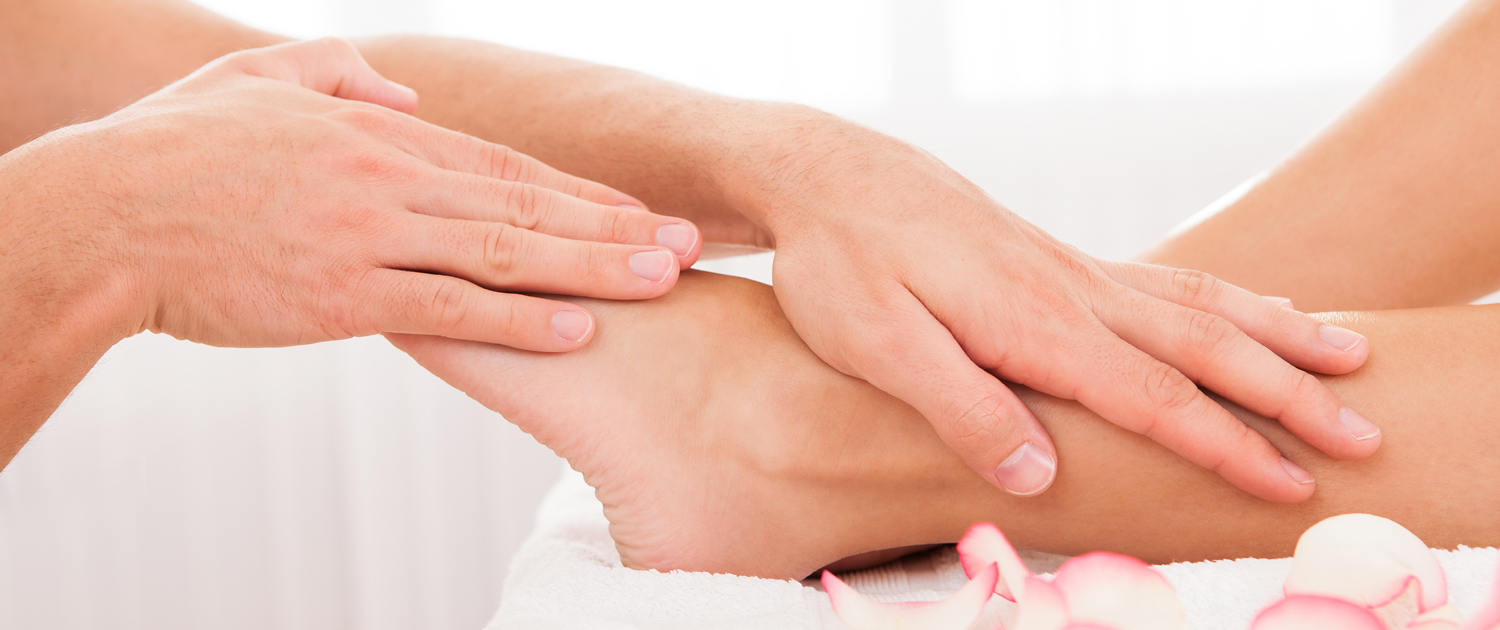REFLEXOLOGY Q&A
Reflexology is a skin-to-skin contact healing technique that many people confuse with other alternative healing methods such foot massage or general massage. Although there may exist similarities between reflexology and several other forms of traditional medicine, there is a considerable difference between them.
What is Reflexology?
Reflexology is a natural healing art based on the principle that there are reflexes in the feet, hands, and ears, which correspond to every part, gland, and organ of the body. Through application of pressure on these reflexes, Reflexology relieves tension, improves circulation, and helps promote the natural function of the related areas of the body.
Is foot Reflexology the same as foot massage?
Though there are a few massage techniques that are used in Reflexology, Reflexology and foot massage are not the same. Reflexology works with the feet as anatomical maps of the whole body. By applying pressure to one part of the foot, the reflexologist aims to benefit not only the feet but also the rest of the body. Reflexology is not massage as understood in the systematic and scientific manipulation of the soft tissues of the body and is not referred to as such. It stands alone and separate from other therapies or any other form of practice or treatment. It may however, enhance and/or complement other practices.
What are the benefits of Reflexology?
Many health problems can be associated to nervous and physical tension. Reflexology helps reduce stress and tension, strengthens immune system function, improves blood and lymph circulation, improves assimilation of nutrition and elimination of toxins, and calms the nervous system, thereby helps the body to normalize itself naturally, without adverse side effects, and enhancing the body’s overall health and vitality.
- Relaxation – Reflexology helps the body to relax by opening neural pathways. It helps to put the mind and body at peace.
- Detoxification – it minimizes problems associated with the urinary tract and improves the functionality of the bladder. This, in turn, plays a crucial role in eliminating waste products from the human body.
- Elimination of pain – by releasing tension in the muscles, Reflexology helps in fighting migraines and headaches.
- Improved circulation – Reflexology allows better and improved circulation of the blood and oxygen.
- Healing – it helps the body to enhance and improve its natural healing ability
- Energy boost – it is known to give an energy boost to those who feel weak and fatigued
- Immunity boost – it goes a long way in improving the immune system
- Stress relief – Reflexology is good for relieving stress and anxiety
- Improved nerve endings – it can stimulate nerve endings and in the long run, improve their overall reactivity and functionality
- Relieves cancer side effects – although it does not cure or treat cancer, Reflexology can reduce the severity of chemotherapy and other cancer side effects
- Diseases or chronic conditions – it can lower the severity of several diseases or chronic illness such as sinusitis, multiple sclerosis, diabetes, hypertension, and arthritis
- Metabolism – it improves the metabolism of the body
- Pregnancy – Reflexology can help women to minimize the possibility of suffering from post-partum depression
- Improved sense of well-being
- Improve sleep
Is Reflexology covered by my health plan?
Please contact your insurance provider before your appointment to see if they cover Reflexology and how much is covered. If your policy does not provide coverage you require, you may write the insurance company, asking them to include Reflexology in your type of coverage. If that fails, you can instruct your broker to find a plan that does cover Reflexology. Currently companies that accept Reflexology include Cooperators, Manulife, Green Shield and Sun Life. Companies that accept Reflexology depending on the plan and province include Blue Cross. At your treatment, you will be provided you with a signed receipt from our Reflexologist with his or her RCRT number for you to self-submit. All Reflexologists at Toronto Reflexology are certified with the Reflexology Association of Canada. You may consider purchasing a plan through the Reflexology Association of Canada’s recommended provider which is Manulife, c/o Doris Malek, CHS, 416-505-6807 or email: doris.malek@canadaloyal.com.
Does Reflexology cure diseases or ailments?
Reflexology is not intended to cure diseases or ailments. Reflexologists are not medical practitioners and are not allowed to diagnose ailments or treat diseases. Reflexology is a valuable way of indicating areas where higher stress is present in the body. It can assist to relieve that stress or tension which can promote or encourage the natural healing process.
What can I expect in a Reflexology session?
During the session, you will recline in a comfortable Reflexology chair. Your first visit we will fill out a confidential client health form, and prepare a plan for you. You will remain fully clothes, except for your feet and lower leg.
How many sessions of Reflexology are recommended?
At least 3 to 6 consecutive Reflexology sessions are recommended to get greater therapeutic results.
What will I receive in a Reflexology session?
You will receive a relaxing 60 or 90 minute Reflexology treatment. The client is in a quiet, relaxing environment, lying in a comfortable position. During the session, the therapist will fill in the RAC Health Record Form and discuss a treatment plan with the client.
Is Reflexology painful?
Reflexology is a very gentle therapy. A slight discomfort may however be experienced in certain reflex areas and is an indication of congestion or imbalance in a corresponding part of the body. This is however fleeting and for the most part, the sensation is pleasant and soothing. Our Reflexologist will check with you on the level of pressure that’s comfortable for you and work within your threshold.

